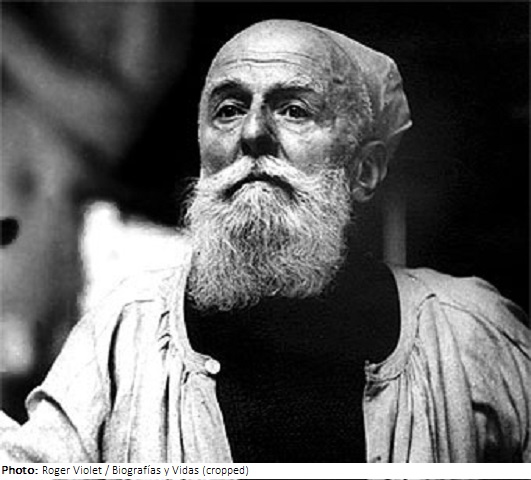Albert Bartholomé

Biographical information
| Roles | Referee |
|---|---|
| Sex | Male |
| Full name | Paul Albert Auguste•Bartholomé |
| Used name | Albert•Bartholomé |
| Born | 29 August 1848 in Thiverval-Grignon, Yvelines (FRA) |
| Died | 30 October 1928 in Paris XVIe, Paris (FRA) |
| NOC |  France France |
Biography
Albert Bartholomé abandoned his law studies and served in the Franco-Prussian War. A prisoner of war in Switzerland, he devoted himself to painting. He then studied in Geneve and at the École des Beaux-Arts in Paris but was also partly self-taught.
From 1879 Bartholomé was represented at the Paris Salon with portraits and rural milieu depictions in oil and pastel. After 1886, also self-taught, he began sculpting to create a tombstone for his deceased wife. Following this first work, the idea for his main work, a monumental tomb, was born. It was shown at the Salon, first in partial sketches, then in 1895 in a first complete model. Commissioned by the state and the city of Paris, his work was executed in limestone and unveiled in 1899 at the Père-Lachaise cemetery in Paris.
In addition to this main work, which was influenced by Symbolism, Bartholomé created mainly female nudes and portrait busts. In his later creative phase, sculpturing monuments took up a large part of his work. He created, also in collaboration with other artists, several monuments for the fall of World War I and several private grave sculptures. The Monument de Jean-Jacques Rousseau for the Panthéon in Paris, created in 1910- 12, shows his departure from the academism of his early years to classicism. He ranks among the most important French sculptors of the late 19th and early 20th centuries.
From 1891 Bartholomé was a member of the Société Nationale des Beaux-Arts, later its vice-president, and 1921-24 its president. He was a member of the Berlin Secession as well as several academies in European countries. In 1895 he became an officer and in 1911 a commander of the Legion of Honor. He had an intense friendship with Edgar Degas (1834-1917). Since 1880, his wife Marie-Louise (1849-1886), the daughter of a marquis, ran a salon that encouraged acquaintance and discussion with artists, writers, and art critics of the time.
Referee
| Games | Sport (Discipline) / Event | NOC / Team | Phase | Unit | Role | As | |
|---|---|---|---|---|---|---|---|
| 1924 Summer Olympics | Art Competitions |  FRA FRA |
Albert Bartholomé | ||||
| Sculpturing, Open (Olympic) | Final Standings | Judge |